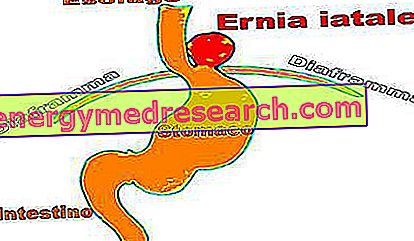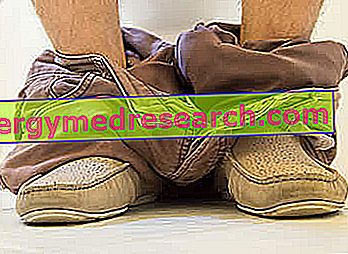By Dr. Antonio Parolisi
In the world of sport and in particular in Weightlifting in general, the problems that emerge can be very many.
Complications affecting connective tissues, such as tendons, ligaments, muscles, or affecting the skeletal, articular or capsular structure, are always on alert; this is because the stress induced by the loads can cause "disturbances" to the aforementioned structures.
Those who practice sports regularly, and in particular activities such as Bodybuilding, know these stories well, perhaps directly as a "victim" or simply by hearsay.
There are, however, problems that apparently fail to make a direct match with the sport, yet the primary cause lies precisely in the physical activity practiced.
Among the many disturbances, due to their importance and recurrence, there is undoubtedly the Hernia Iatale (Jatale or of the esophageal side).
This particular problem is a fairly common evil among iron lovers. In fact, often, the unleashed event is the weight lifting, with reference to some exercises in particular.
This pathology consists of the herniation (leakage of tissue) of a part of the stomach through the diaphragm, from its normal location towards the chest. (see figure)

In fact part of the stomach escapes through the esophageal hiatus, then through that orifice where the tubular structure of the esophagus passes, which joins the gastric structure (stomach). This continuous stress, given by the damping of this part of the stomach's sack, creates a situation of discomfort of the acid reflux type, since the sphincter wall of the esophagus-stomach - which serves as a valve between the two structures - does not completely absolve the its function, because it is stressed by the ascent of the hernia, so it cannot prevent the acid component from rising back into the chest area. This often also involves a condition, not at all pleasant, of halitosis and a feeling of disgust. In practice, there are slipping hernias (very common and often self regression, therefore they go away on their own) and entrapment hernias, where part of the stomach is compressed between the walls of the diaphragm orifice and the esophagus.
A problem of this type can be diagnosed mainly by x-ray, where often there is a really high percentage of people who suffer from it even if they are not aware of it. Therefore, a consultation with a Gastroenterologist is always to be taken into consideration!
The most common symptomatology is mainly represented by gastroesophageal reflux, which consequently will give a condition of heartburn (heartburn), pain and regurgitation.
Most often it is presented as a retro sternal pain, which makes the subject anxious for anatomical correspondence with the heart. You may have difficulty swallowing, with a sense of a foreign body in the throat that obstructs the passage of the food bolus. Obviously it depends on the severity of the condition but in important situations there may also be respiratory failure (if the size of the hernia reaches truly remarkable dimensions).
People often present, from a postural point of view, a closed situation, because the body, due to a condition of reflex protection, "closes around the suffering", and a typical "back" posture can be presented, therefore with an increase in dorsal kyphosis and retreat of the body center (see figure).




